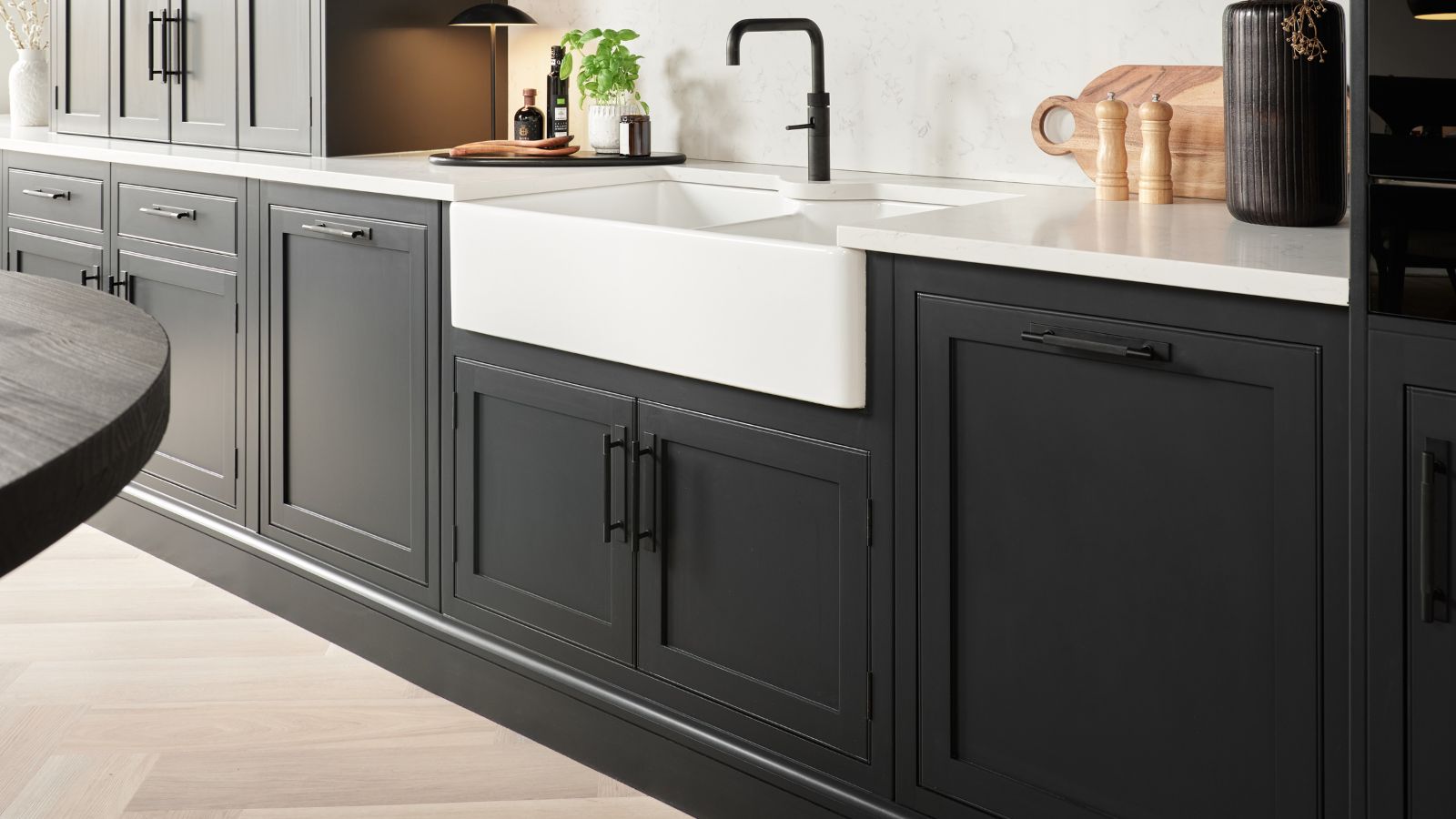Are you thinking of installing a radiator? Discover the right type and output for your needs, and the best location to place it
If you're installing a new radiator, you need to make the right choices. Here you’ll find expert advice to help you make the right decisions
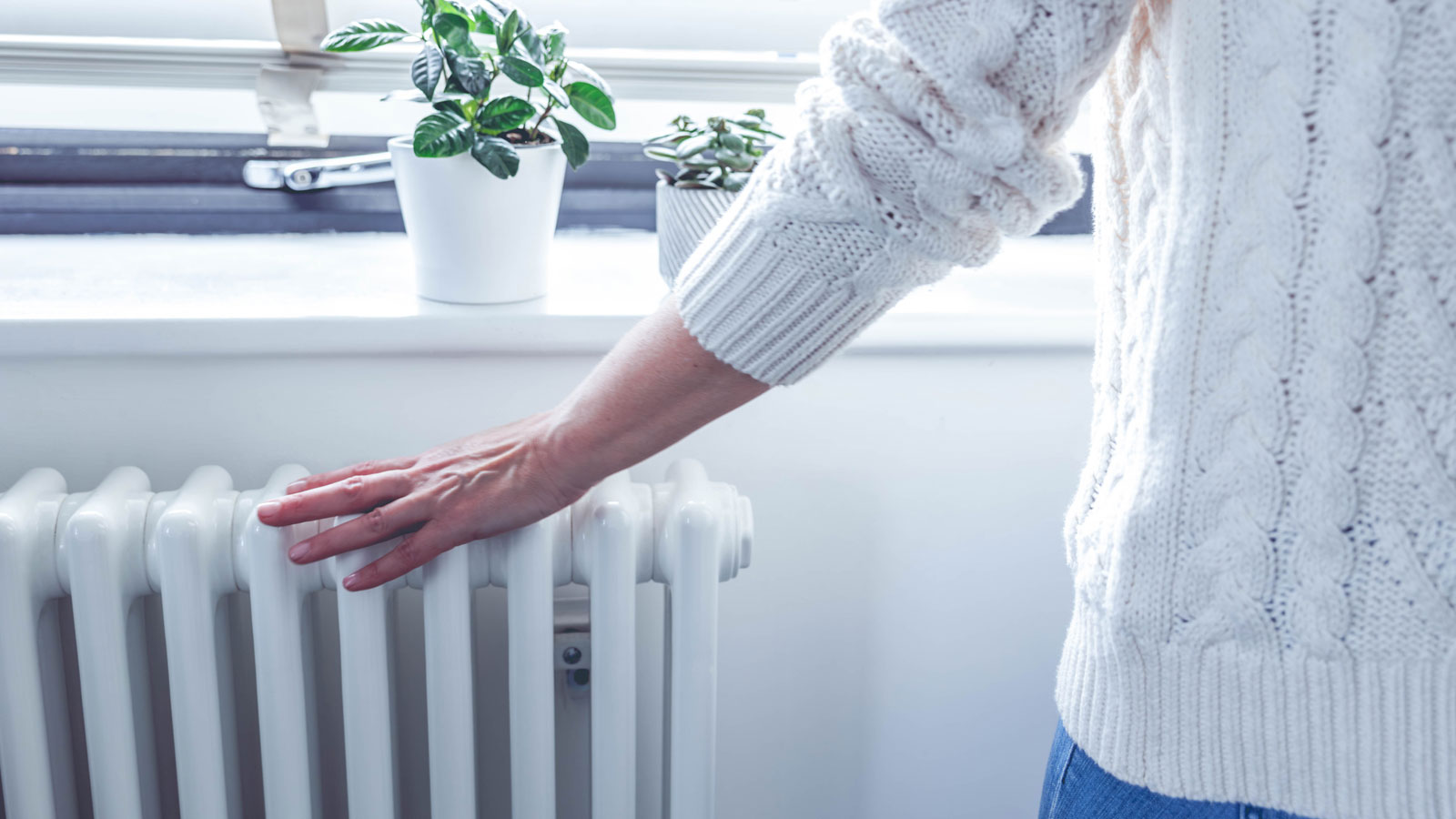
There will come a time when you need to say goodbye to your old radiators. The older they are, the less efficient they become, so installing new radiators will benefit the environment and help lower your energy bills. While the practical benefits are a real bonus, it's a good time to upgrade to those smart new designer radiators that you’ve been coveting.
Whatever the reason for the upgrade, you want to choose the best radiators for your needs. You’ll need to think about what type you want, but just as importantly, you need to make sure that you get the right size to ensure they pump out enough heat. Here, you’ll find all the info you need to help you make the right choice.

Patrick Garner is a seasoned Gas Safe certified engineer and the dedicated leader of the heating system installations team at Heatable, with extensive experience in boilers, heat pumps, and home energy solutions.
Making the right choice when installing a radiator
Size, shape, style, colour, and design are key aesthetic considerations when choosing the type of radiator you want. However, you can’t forget the practicalities, such as heat output and budget.
Heat output
Patrick Garner, Gas Safe Engineer at Heatable, says, “It’s not about matching the radiator you’re taking off the wall, it’s about whether the new one delivers enough heat for the room.” He adds, “That comes down to room size, insulation levels, and the temperature your heating system actually runs at.”
Your heating system helps decide what radiator you’ll need, explains Garner, “If your boiler is set to run cooler for efficiency – as most modern systems are – you’ll usually need a radiator with a higher output than the one you’re replacing.”
Common upgrades
If you're replacing your radiators like-for-like, then you won't have too many decisions to make. However, if you're swapping in a new type or style (check out our Hallway radiator ideas), Garner recommends the following: “You’ll also want to check pipe centres, brackets and the wall type, because switching styles can mean minor pipework tweaks or stronger fixings for heavier models.”
If your home currently has the popular white flat panel radiators, you may want to replace a single panel radiator with a double panel for more warmth. Garner points out the benefits, “It’s a very common upgrade. Single panels look neat, but don’t give out much heat. Double panels with convector fins offer a big jump in output without taking up extra wall space.”
Bring your dream home to life with expert advice, how to guides and design inspiration. Sign up for our newsletter and get two free tickets to a Homebuilding & Renovating Show near you.
As an alternative, column radiators are a popular choice, adds Garner, “Column radiators are stylish and give a nice, radiant warmth, but they’re bulkier, heavier and take a little longer to respond.”
Choosing the right size
If you are looking for a completely new radiator design to install in your home, you will first need to determine what size radiator you need. Typically, you will replace your old radiators with a similar size. This is because all the pipework is already in place, and changing size will mean potentially expensive alterations to your piping system.
But it doesn’t need to be the same size as Garner shares, “You can go longer and lower under a window, or taller and slimmer to fit a tight space.” He adds, “The physical dimensions don’t matter as much as the heat output, which is measured in kilowatts. As long as the new radiator matches the required output for the room, the shape can change.”
Style and colours
When you’ve decided what size radiator you need, you can start getting creative and think about the shape, style and colour. There’s plenty of styles and colours to choose from – apart from white – with contemporary finishes like black and anthracite being popular. It's worth noting that you can also paint a radiator to match any colour scheme you have.
Traditional column radiators like this Acova Volcanic 2 Column Radiator from B&Q give older homes a more cohesive look and feel. When it comes to shape, it's often vertical as opposed to horizontal, but if you want to get more left field, you could splash out on something like this Reina Dimaro Designer Vertical Radiator from AQVA Bathrooms.
Try these radiators in your home
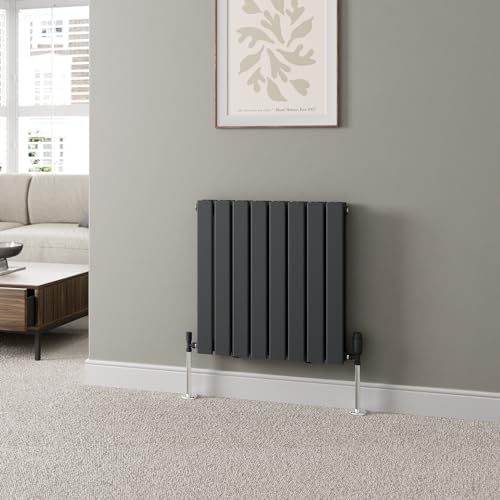
Smart and stylish Anthracite flat panel radiators that are scratch and rust-resistant. Available in a wide range of sizes from small and compact to long and large, making them ideal for any room in the home.
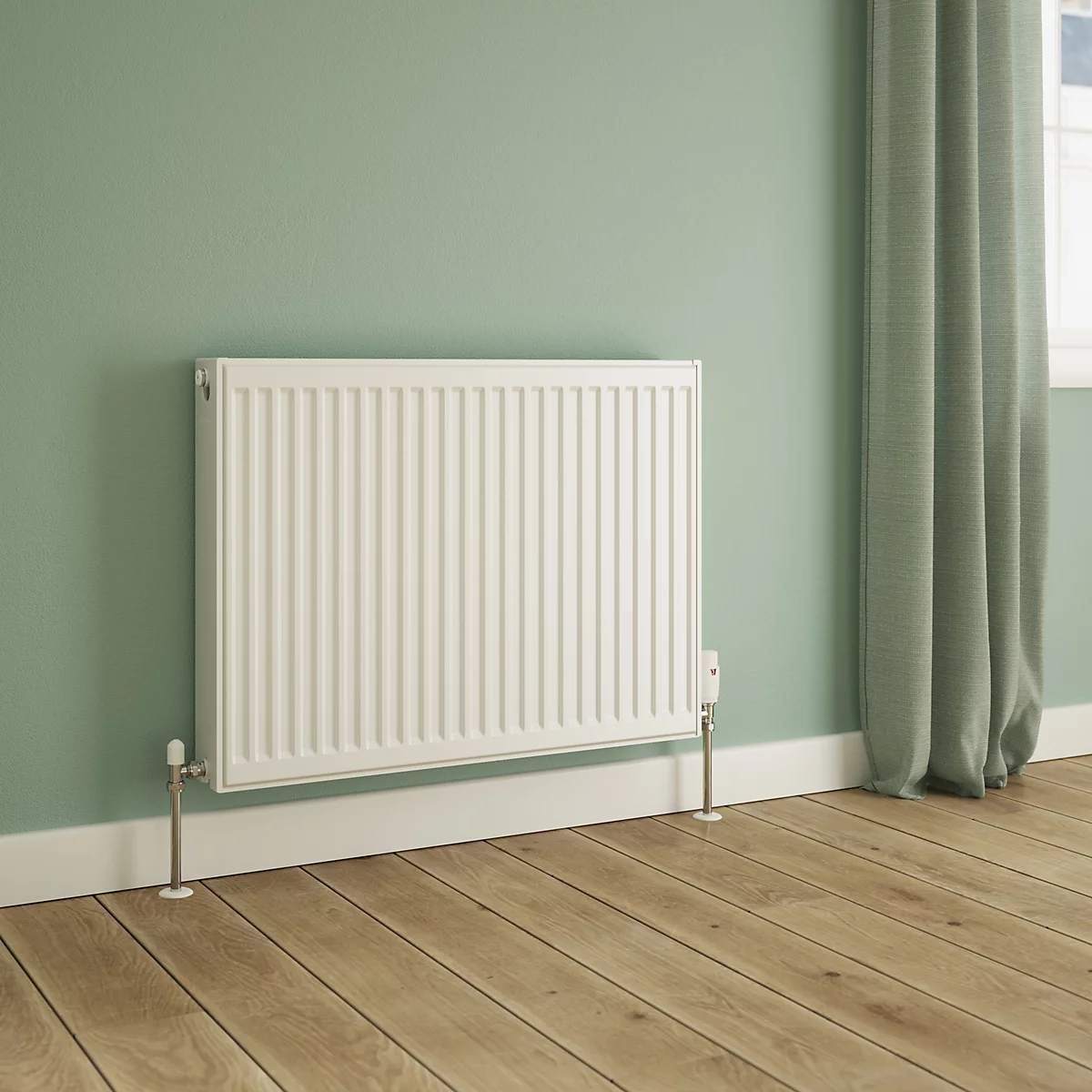
A basic two-panel radiator in white is a popular choice in many homes throughout the UK. Comes in various sizes and provides enough heat for bedrooms, hallways, living rooms, and kitchens.
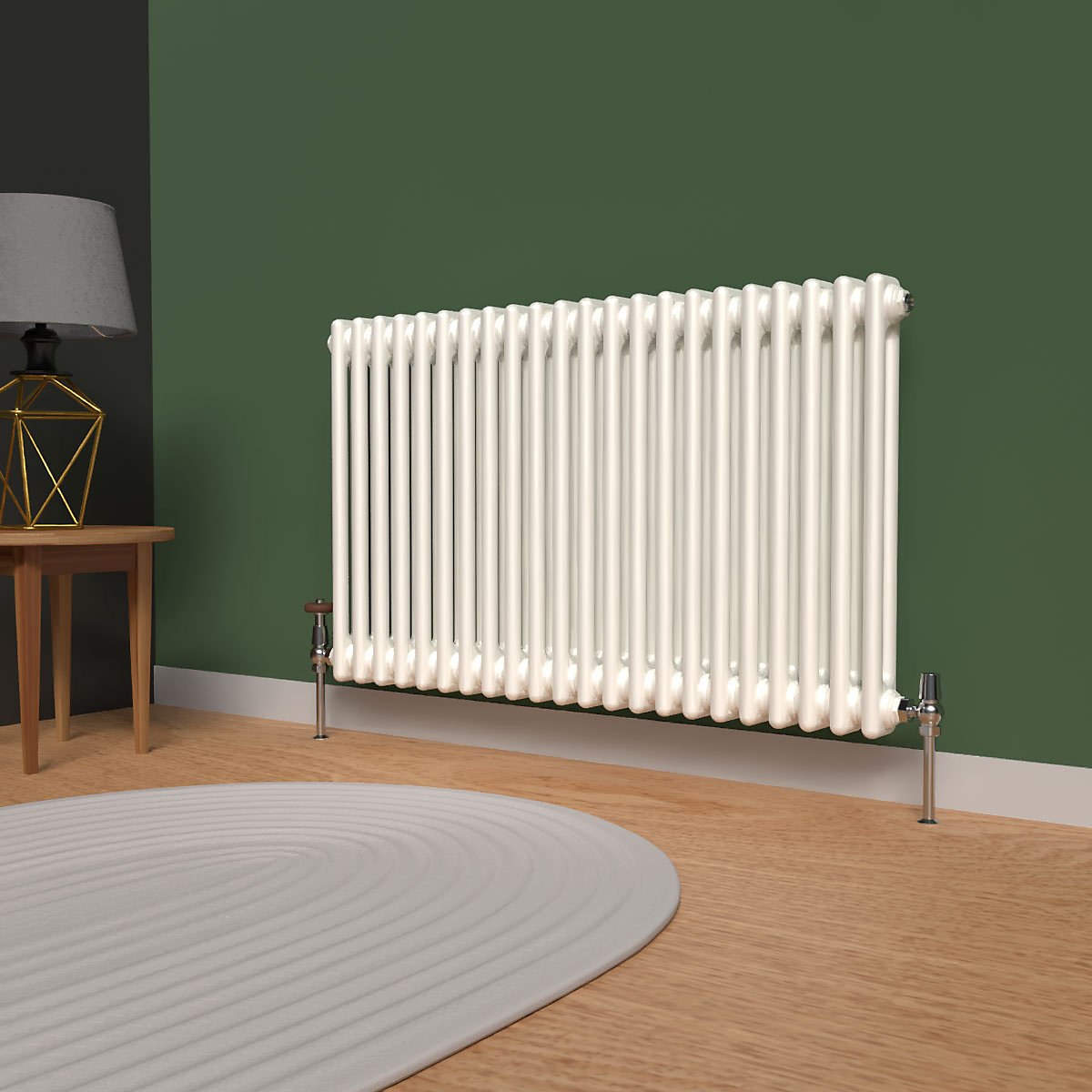
A traditional two-column radiator that offers the perfect blend of classic design and modern efficiency. Finished in white, it offers exceptional heat distribution, boasting a 3606 BTU and 1.057W output.
Calculating BTUs
When installing a new radiator, it is common to replace it with a similar-sized radiator. But you need to check if the new radiator is going to give you enough heat. Garner explains how radiators are rated, “Radiators are rated by heat output, shown in kilowatts in the UK. That figure tells you how much heat they can put into a room per hour.”
However, some retailers (like B&Q) still list BTUs. Garner explains further, “Some retailers still list BTUs, which are just an older unit – one kilowatt is about 3,412 BTUs – but watts and kilowatts are the standard measure here.”
Typically, the higher the BTU, the quicker a radiator will heat a room. But it's not that straightforward, you need a BTU rating that suits the room it's going in. To quickly work out the needed BTU in a room, use B&Q's Radiator BTU calculator. Once you get a BTU rating, check the specs of the radiator you want to purchase to make sure it matches your needs.
To convert, use this BTU to kW calculator from RS. Garner adds a note of caution, “The key thing to remember is that those figures depend on the water temperature.” He adds, “Catalogue ratings are often based on hotter systems than most homes actually run, so the real output may be lower. That’s why it’s important to size radiators based on your actual boiler settings.”
As an example for a small bedroom (3m x 3m), you will need a radiator with an output of approximately 1kW or 3000 BTUs.
Choosing a radiator's position
Existing pipework typically determines where a radiator might be positioned and is an easy way to install a radiator. However, this position might not be ideal. If this is the case, repositioning the radiator might be necessary.
Garner shares, “The main principle is: put the radiator where the heat loss is greatest, usually on an external wall.” He adds, “Traditionally, it’s under the window, because older windows were draughty and the radiator helped warm that cold air straight away. But with modern double glazing, it’s less critical, but it still works well because it sends warm air up over the coldest surface in the room.”
Garner says, “Just avoid hiding it behind furniture or thick curtains; otherwise, you’re heating the sofa instead of the room. And if you’re using thermostatic valves, make sure they’re in free air so they don’t cut off too soon.”An open wall, where no furniture will be placed and won’t cause an obstruction, is ideal. If you have a lack of wall space in a room, a vertical radiator may solve the problem.
FAQs
How much does it cost to install a radiator?
The cost to install a radiator can vary greatly depending on the cost of the radiator(s), how many are being installed, whether you are doing it yourself and if any additional pipework, valves and TRVs are needed.
A basic white 600mm x 400m single panel radiator like the Flomasta White Single Panel Radiator from B&Q costs around £30. But a larger 1000mm x 600mm double panel version of the same radiator will cost around £75. The popular traditional radiator like this Acova White 3 Column Radiator, again from B&Q, will set you back nearly £400.
Pipework prices will vary depending on whether you are using plastic or copper pipe, with copper pipe being around three times the price. Standard valves are relatively cheap with a TRV (Thermostatic Radiator Valve) like this GoodHome Thermostatic radiator valve head from B&Q costing around £10. Check out our How a TRV works guide to find out what they do and why you need them.
A competent DIYer with previous experience should have no problem installing one or two radiators, but if you are not confident in tackling the job yourself you can expect to pay around £200 to fit a new double panel radiator. If you need more radiators fitting expect to pay £250-£500 for a day’s work. This will typically be three radiators plus draining and refilling the system.
Can I change a radiator without draining the system?
If you are only changing a single radiator then you typically don’t need to drain down the system. Radiators typically have a lockshield valve and a TRV on each side of the radiator. To isolate the radiators switch off both valves, before undoing the nuts on the side of the radiator.
You will need containers and towels when draining the water out of the radiator before placing it out of the way. Get your new radiator and fix into place, reattach the lockshield valve and a TRV and open both to fill the radiator. Finally, you need to bleed a radiator to get rid of any trapped air and repressurise the heating system.
Ideally you don’t want to drain down the system unless necessary as it will contain rust inhibitors and cleaner that help keep the system running efficiently. These will need to be replaced at extra cost. But, if replacing more than two radiators you will need to drain down the system
If you are changing the heating system in your home as well as giving your radiators a refresh, be sure to check out all our content on types of boiler, oil boiler alternatives as well as gas boiler alternatives.
Steve Jenkins is a freelance content creator with over two decades of experience working in digital and print and was previously the DIY content editor for Homebuilding & Renovating.
He is a keen DIYer with over 20 years of experience in transforming and renovating the many homes he has lived in. He specialises in painting and decorating, but has a wide range of skills gleaned from working in the building trade for around 10 years and spending time at night school learning how to plaster and plumb.
He has fitted kitchens, tiled bathrooms and kitchens, laid many floors, built partition walls, plastered walls, plumbed in bathrooms, worked on loft conversions and much more. And when he's not sure how to tackle a DIY project he has a wide network of friends – including plumbers, gas engineers, tilers, carpenters, painters and decorators, electricians and builders – in the trade to call upon.

